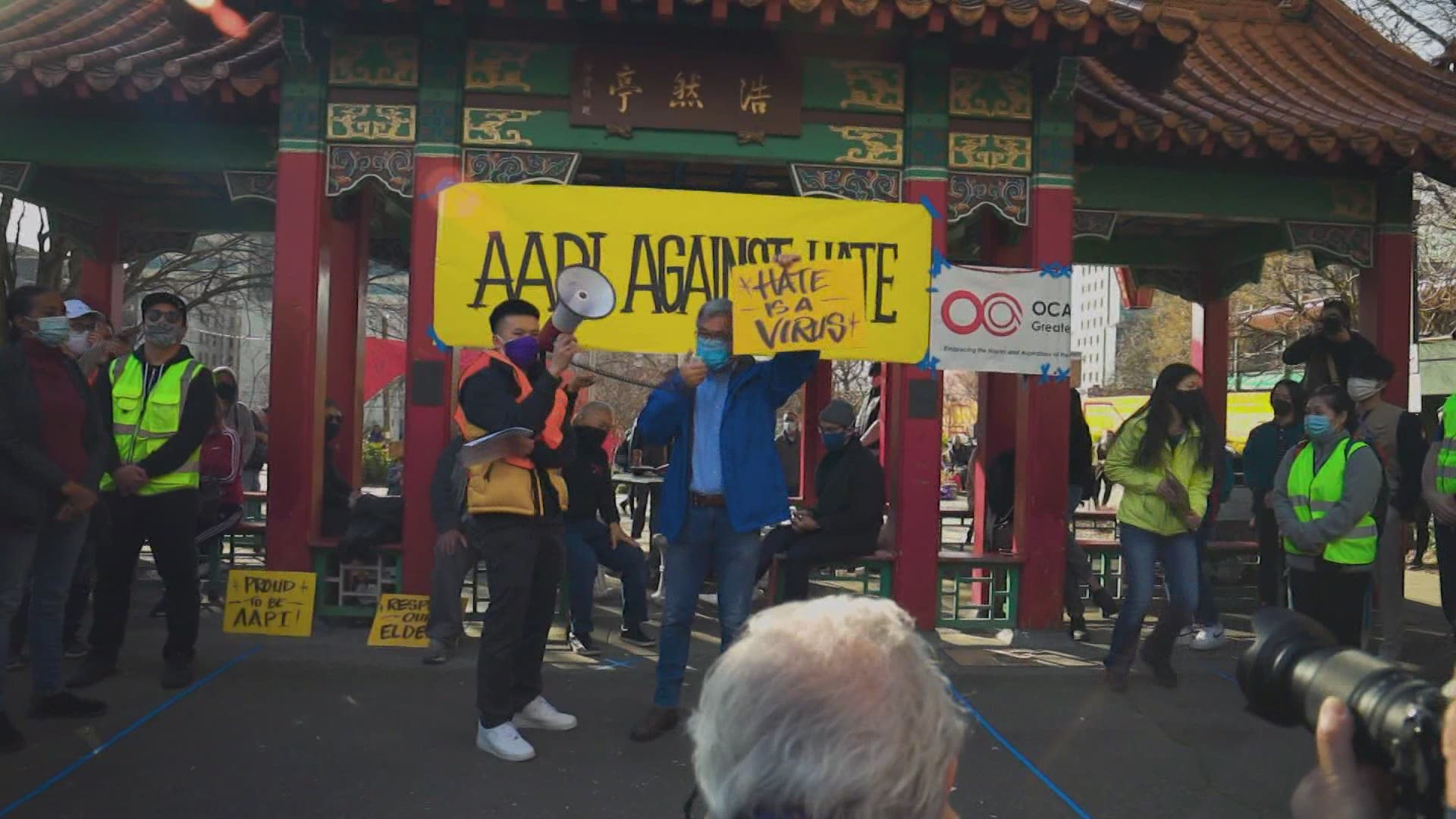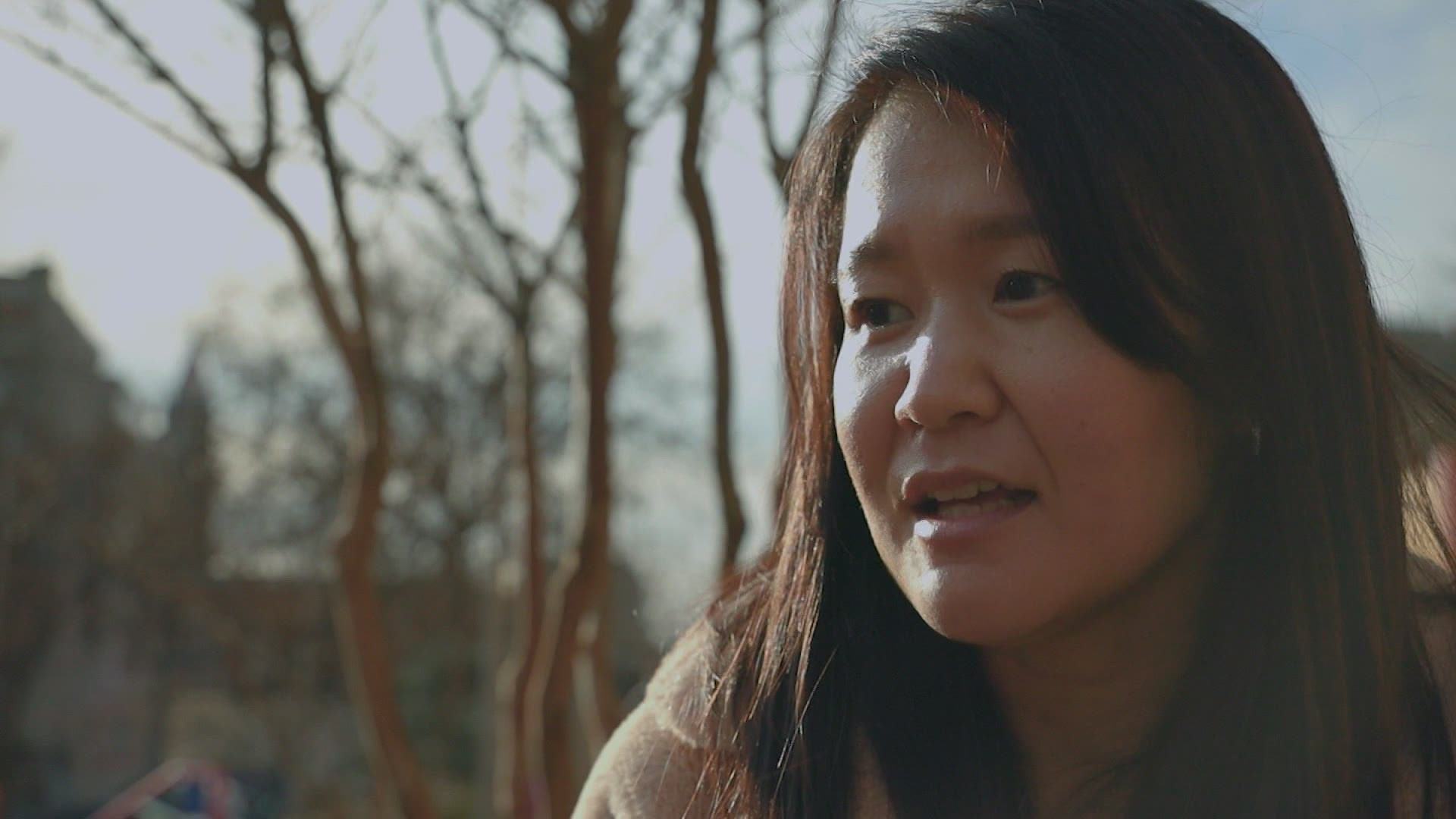SEATTLE — Anti-Asian hate crimes rose nearly 150% in major U.S. cities in 2020, according to a new report released by the Center for the Study of Hate and Extremism.
Amid the surge in attacks, Black and Asian American communities are uniting against racism. However, during this time, there’s also a call to confront divisions between the two communities.
KING 5's race and equity unit Facing Race looks at the complex history that includes times of tension and solidarity.
The attacks against Asian Americans have been happening unprovoked and in plain sight across the country and in Seattle.
On the evening of Feb. 25, Noriko Nasu was the victim of an attack in Seattle’s Chinatown-International District.
"He came to Chinatown to look for a victim with a weapon in his pocket. He avoided my partner. He went out of his way to strike me,” said Nasu. "I could feel my mask was filling up with blood."
Nasu, a high school teacher, was left with four broken teeth, three facial fractures and a concussion.
"If I smile, my face is lopsided,” said Nasu, who is still recovering from her injuries.
The suspect was caught.
Nasu calls it a hate crime, but the King County Prosecuting Attorney’s Office says, at this point, it does not have the evidence needed to file the case as a hate crime.
“As horrible as this attack was, we do not believe we can prove a hate crime before a jury beyond a reasonable doubt. Investigators, which are separate from our office, are looking for evidence that would allow us to prove a hate crime beyond a reasonable doubt. However, if convicted for the two felony assault crimes we charged, that defendant would face a longer punishment than if the case were charged as a hate crime,” the King County Prosecuting Attorney’s Office said in a statement.
In the neighborhood where Nasu's attack happened, a Night Watch was formed about nine months ago. Volunteers meet a few nights each week and walk through the neighborhood to offer help to those in need.
The neighborhood is home for Tanya Woo, who is also a Night Watch volunteer.
“This is just a small community," said Woo. "We know the business owners. We know people who live here. We know people who work here. And it was like, these small businesses are already suffering from COVID. Having our windows broken, it’s a lot, having to pay a thousand dollars for a new window when you are already suffering from a lack of business."
"We realized the need,” said another volunteer. “Some people need protection while walking through this neighborhood. They don't feel safe. So we are trying to see how we can meet that need."
Matt Toles organized the Chinatown-International District Night Watch as a community-based effort to combat the rise in vandalism and violence happening in the neighborhood.
“It's terrible, but the only way we can handle it, the only way to move forward, is to get organized and not put up with it,” said Toles. “Now is the easiest time, at least in my lifetime, to get organized and get together and start a movement like we have been doing.”
STOP AAPI HATE, an advocacy group tracking the escalation of xenophobia and bigotry, says it received nearly 3,800 reports of hate incidents targeting Asian Americans across the county since the pandemic began.
Vince Schleitwiler teaches Asian American and African American studies at the University of Washington.
"Anti-Asian violence has been a problem as long as I've been alive. But very rarely does it break through,” said Schleitwiler.
Attention is being paid now to cases like the Atlanta mass shooting that claimed eight lives. Six of the victims were women of Asian descent. The shooter, a white man, claims the attack was not motivated by hate.
“The violence in Atlanta was an act of hate. We grieve with Atlanta and for the victims and their families,” said Seattle Mayor Jenny Durkan and Chief of Police Adrian Diaz in a joint statement.
“We also stand together with our Asian American community against the rise of hate crimes towards Asian Americans, which especially target Chinese Americans. In Seattle and across our nation, our Asian American neighbors, places of worship, and businesses have been deliberately targeted by racism, xenophobia, and acts of violence related to misconceptions of COVID-19,” the statement continued.
There have also been widely circulated videos that show Black men attacking Asian Americans, and that has brought up historical tensions between Black and Asian American communities. The conflicts are well known inside both of those communities, but often not talked about openly.
"We should take this moment to challenge the narratives that would pit one group against another,” said Schleitwiler. "Why is it so much easier to get attention for conflicts between Black and Asian people? Why do Asian Americans make the news, make discussions of race, when they can be used against Black, Indigenous and other people of color?"
"Honestly, like part of buying into the model minority myth is buying into anti-Black racism,” said Shomya Tripathy, director of policy and civic engagement at Asian Counseling and Referral Service.
The model minority myth claims Asian Americans are successful and downplays racism.
"For a long time, I think many Asian people, including South Asian people, have been sold the narrative that your proximity to whiteness will liberate you," said Tripathy. "The more closer you are to white people, the more money that you make, the more you put your head down, study hard, you will be free from racism, is a narrative that we have been sold and has created this model minority myth. I think seeing this rise in anti-Asian violence is like just the most visceral example that that is not true. I think that white supremacy is 100% where we should be focusing our attention on right now and not how our communities have tension."
It is not only a history of tension between Black and Asian American communities; over the years there has been solidarity too.
"Is there a problem with anti-Blackness in Asian communities? Absolutely. And this history of organizing is a history to try to counter that,” said Schleitwiler.
That history of organizing is one that includes Black and Asian American communities coming together to work hand in hand over the years.
A good example of that kind of unity is Seattle’s Gang of Four, also known as the Four Amigos. Bernie Whitebear, Roberto Maestas, Bob Santos and Larry Gossett were four leaders from four different communities. They came together in the 1960s, 70s and 80s to bring about change.
"They did that because they were friends. They did that because they got along. They did that because their communities had always lived together in Seattle, in segregated Seattle," Schleitwiler explained.
"Seattle's Gang of Four was a very magnificent group of non-white activists who forged unity and brotherhood and very effective multiracial organizing efforts that ended up being successful,” said Gossett, the only surviving member of the group.
Gossett says as communities of color were being pitted against one another, Seattle’s Gang of Four found tremendous power in their united front as they fought for equality and social justice when it came to issues like education, housing and health care.
"Through organized struggle and pressure, it is possible to get change in America. We did it,” said Gossett.
Gossett says he is committed to carrying on the legacy.
Recently, in Seattle’s Hing Hay Park, people came together to take a stand against the hatred toward Asian Americans.
Gossett spoke at the rally.
He told the crowd, "It won't be done unless we are willing to organize across racial lines, Black, Asian, Native, Latino, progressive Whites all together."
The rally in Seattle is one example of how the rise in anti-Asian violence has led to calls for all communities to work together against racism.
"I don't want to suggest that these communities don't have conflicts, right?" said Schleitwiler. "These two things can be true at the same time. You can have a long history of solidarity. And you can also have, at the same time, a history of antagonism and prejudice. Those pressures have always been felt in our communities."
"I just hope that we can build a more united front that involves people from all communities," said Gossett. "That's beneficial to everybody."


